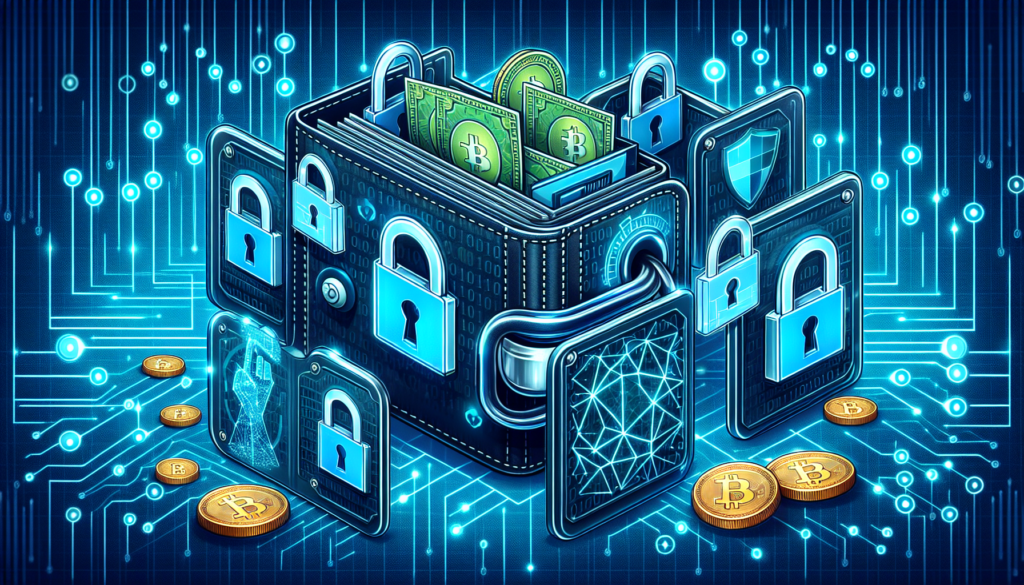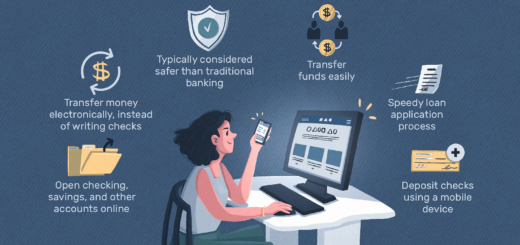The Ultimate Guide to Securing Your Crypto Wallet
Are you a fan of cryptocurrencies? Whether you’re a seasoned investor or just starting out, it’s crucial to prioritize the security of your crypto wallet. In this comprehensive guide, we will walk you through the essential steps to safeguarding your digital assets. From setting up strong passwords to utilizing two-factor authentication, we’ve got you covered. Discover the best practices and expert tips to ensure that your crypto wallet remains impenetrable. Don’t let the fear of cyber threats hold you back from enjoying the benefits of cryptocurrency – with our guide, you’ll be equipped with the knowledge to confidently protect your investments.
Choosing the Right Wallet
When it comes to cryptocurrencies, one of the most crucial steps in your journey is choosing the right wallet. A crypto wallet is essentially a digital wallet that allows you to store, send, and receive your digital assets securely. However, with the multitude of options available in the market, selecting the right wallet can be overwhelming. To make this process easier, it is important to have a clear understanding of the different types of wallets and the factors you should consider before making your decision.
Understanding the Types of Wallets
There are several types of crypto wallets available, each with its own set of advantages and disadvantages. The main types of wallets include:
-
Hardware Wallets: Hardware wallets are physical devices designed to securely store your cryptocurrency offline. They offer the highest level of security and are immune to malware attacks. Examples of popular hardware wallets include Ledger Nano X and Trezor Model T.
-
Software Wallets: Software wallets are applications that you can install on your computer or mobile device. They can be further divided into two categories:
-
Desktop Wallets: These wallets are installed on your computer and offer a higher level of security compared to mobile wallets. Examples of well-known desktop wallets include Exodus and Electrum.
-
Mobile Wallets: Mobile wallets are apps that can be installed on your smartphone, providing easy access to your crypto funds on the go. Some popular mobile wallets include Trust Wallet and Edge Wallet.
-
-
Web Wallets: Web wallets are accessed through a web browser and stored on a remote server. While they offer convenience, they are considered less secure compared to hardware or software wallets. MyEtherWallet and MetaMask are examples of commonly used web wallets.
-
Paper Wallets: Paper wallets involve printing out the private and public keys of your crypto assets onto a physical piece of paper. They are considered highly secure as they are not susceptible to online attacks. However, they require careful handling and storage to prevent loss or damage.
Considerations for Selecting a Wallet
With so many wallet options available, it is essential to consider certain factors before making a decision:
-
Security: The security of your digital assets should be your top priority. Consider wallets that offer strong encryption methods, multiple layers of authentication, and robust backup and recovery options.
-
User-Friendliness: Look for wallets that have a user-friendly interface and intuitive features. This will make it easier for you to manage your crypto assets, especially if you are new to cryptocurrencies.
-
Supported Cryptocurrencies: Ensure that the wallet you choose supports the specific cryptocurrencies you own or plan to own. Not all wallets support all cryptocurrencies, so check the wallet’s website or documentation for a list of supported assets.
-
Development Team: Research the wallet’s development team and their track record. Look for wallets that have been developed and maintained by reputable individuals or organizations with a strong background in cryptographic security.
-
Community Support: Consider wallets that have an active and supportive community. A thriving community can provide helpful resources, guides, and forums for troubleshooting and sharing experiences.
-
Compatibility: Check if the wallet is compatible with your operating system or device. Some wallets are designed specifically for certain platforms, while others are cross-platform compatible.
-
Backup and Recovery Options: Ensure that the wallet offers reliable backup and recovery options. Losing access to your wallet can result in permanent loss of your funds, so it is imperative to have a backup plan in place.
Installing and Setting Up Your Wallet
Congratulations on choosing the perfect wallet for your crypto assets! Now, it’s time to install and set up your wallet to start securely managing your digital assets. Follow these steps to get started:

Selecting a Reliable Wallet Provider
Before proceeding with the installation, it is crucial to choose a reliable wallet provider. Do thorough research, read reviews, and check the wallet provider’s reputation before making a decision. Opt for well-established providers with a track record of security and user satisfaction.
Installing the Wallet Application
Once you have chosen your wallet provider, visit their official website and navigate to the downloads or installations section. Choose the appropriate version of the wallet application for your operating system or device. Download the installation file and follow the instructions provided to complete the installation process.

Creating a New Wallet
After installing the wallet application, open it and look for an option to create a new wallet. The exact steps may vary depending on the wallet provider, but generally, you will be prompted to choose a strong password and generate a new wallet address.
Follow the on-screen instructions to complete the wallet creation process. Take note of your wallet address and store it in a secure location. This address will be used for receiving funds, so it is essential to keep it confidential.
Back-Up and Recovery Options
Once your wallet is created, it is crucial to set up backup and recovery options. This will ensure that you can regain access to your funds in case of a device failure or loss.
Most wallets provide a recovery phrase or seed phrase consisting of a series of words. Write down these words on a piece of paper and store it in a secure location. It is recommended to make multiple copies and keep them in separate, safe places. Memorizing the recovery phrase is also an option, but proceed with caution as forgetting it could result in permanent loss of your funds.
It is important to note that the recovery phrase should never be shared with anyone, as it grants access to your wallet and funds.
Creating a Strong Password
When it comes to securing your crypto wallet, creating a strong password is paramount. A strong password adds an extra layer of protection and reduces the risk of unauthorized access. Here are some tips to help you create a secure password:
Importance of a Strong Password
A strong password is crucial because it ensures the privacy and security of your crypto assets. With the increasing prevalence of hacking attempts and the value of cryptocurrencies, it is essential to take password security seriously. A weak password can be easily cracked by hackers, potentially leading to the loss or theft of your digital assets.
Tips for Creating a Secure Password
Creating a strong password doesn’t have to be complicated. Follow these tips to create a secure password:
-
Length: Aim for a password that is at least 12 characters long. The longer the password, the harder it is for hackers to crack.
-
Complexity: Include a combination of uppercase and lowercase letters, numbers, and special characters. Avoid using easily guessable information such as your name, birthdate, or common phrases.
-
Avoid Dictionary Words: Do not use common words found in dictionaries, as these can be easily guessed by hacking algorithms.
-
Unique Password: Avoid using the same password across multiple accounts. This practice reduces the risk of multiple accounts being compromised if one password is exposed.
-
Avoid Personal Information: Do not include personal information, such as your name, username, or any identifiable information in your password.
-
Avoid Common Patterns: Do not use common patterns such as “123456” or “qwerty” as they are easily guessable.

















It's great that you talked about how business insurance can provide financial protection against unexpected events and help ensure the…
I like that you mentioned how business insurance is essential for protecting your bottom line and the long-term viability of…